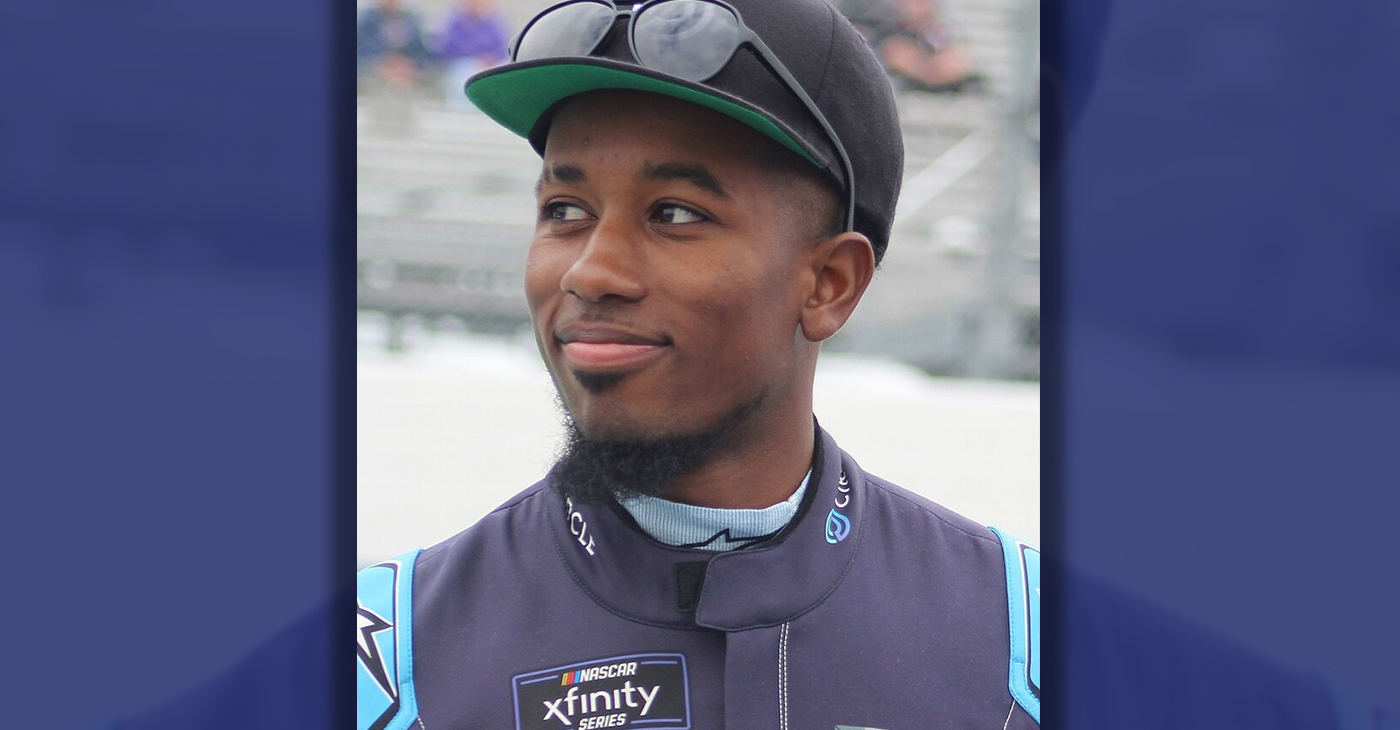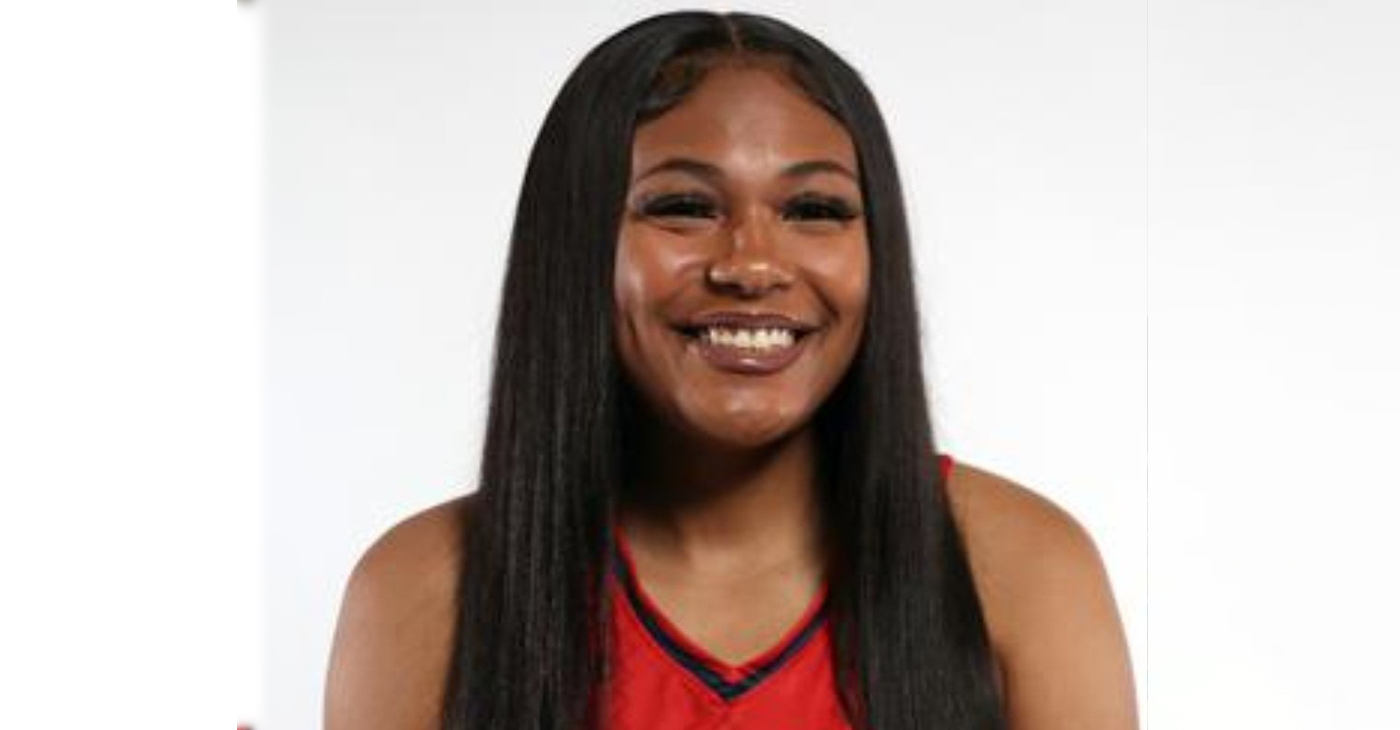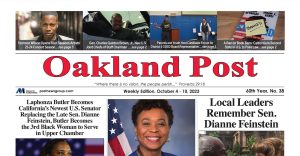Entertainment
Media Turns Detective with ‘The Jinx,’ Other Murder Cases

In this Aug. 15, 2014 file photo, New York City real estate heir Robert Durst leaves a Houston courtroom. Durst was arrested in New Orleans on an extradition warrant to Los Angeles on Saturday, March 14, 2015. (AP Photo/Pat Sullivan)
LYNN ELBER, AP Television Writer
LOS ANGELES (AP) — Robert Durst was a rich man living free despite police efforts to link him to murder. Adnan Syed was a young man imprisoned for life for killing an ex-girlfriend.
Media scrutiny changed their fortunes, pushing both back into the courts: Durst is facing trial on a murder charge, and Syed awaits an appeal of his conviction.
Observers say it’s what journalists, or others taking on the role of investigative reporters, can and should do — but not simply, or heedlessly, to play faux detective.
“We are holding law enforcement accountable,” said Kelly McBride, an expert on ethics for the Poynter Institute journalism think tank. “Our job is not to prove people innocent or guilty. But we very much are part of the checks and balances that ensure that democracy is working.”
Durst, heard dramatically muttering “killed them all” to himself in the Sunday finale of HBO’s six-part docuseries “The Jinx: The Life and Deaths of Robert Durst,” was charged Monday with first-degree murder in the 2000 shooting of his confidante, Susan Berman.
Police had planned to question Berman as part of their renewed probe into the 1982 disappearance of Durst’s wife. In 2003, the multimillionaire real estate heir was acquitted of murder in the death of a Texas neighbor.
Syed, who has maintained his innocence in the strangulation of Hae Min Lee in 1999, when both were teenagers, was granted a request for review by Maryland’s Court of Special Appeals after the popular National Public Radio podcast “Serial” dissected the evidence against him last year.
News and entertainment programs spotlighting criminal cases aren’t new: “America’s Most Wanted” began hunting fugitives in 1988. But the HBO and radio projects, along with a number of TV series, are full-blown investigations.
CBS’ long-running crime-focused newsmagazine “48 Hours” has had an impact on a number of cases. The family of Ryan Ferguson, a Missouri man imprisoned in the killing of a newspaper sports editor, credited the attention of “48 Hours” for drawing attention to his case. He was released after a court determined police fabricated evidence against him.
“Sometimes people feel that nothing will happen to them if they talk to us,” said Susan Zirinsky, senior executive producer. “Obviously that can be incorrect if it goes public. Any exposure can end up coming back to haunt them. We’ve had killers who think they can outsmart us and talk to us, and then the authorities get them.”
Criminals can be braggarts, said Rebecca Lonergan, a University of Southern California Gould School of Law professor and a former federal prosecutor.
“There’s a certain thrill in talking to media,” she said.
But the suggestion that media’s recent record puts law enforcement’s competence in doubt deserves scrutiny, she and others said.
Filmmakers worked on “The Jinx” for seven years, according to HBO. The Orange County Cold Case Task Force, formed last year with 12 investigators, was handed some 800 unsolved murder cases dating back to 1961, said task force member Santa Ana police Sgt. Richard Gatto.
There are other notable differences.
“We have access to certain databases that (journalists) might not have access to,” Gatto said. “But as far as the law is concerned, there are certain things that reporters can do that we can’t do as agents of the government.”
Police must heed constitutional safeguards including the Sixth Amendment, which protects the right to counsel. If a suspect gives any indication that he may have killed someone, all law enforcement interviews must stop, Lonergan said.
Not so with news reporting, which sets its own ethical standards.
“As journalists, we don’t have legal restrictions on how we gather information. We have civil penalties when we do a bad job, but we can pretty much do whatever we want,” Poynter’s McBride said, adding “most of us believe we have an obligation to be transparent and honest.”
With “The Jinx,” she said, Durst’s vague and rambling utterances — captured on a body microphone he kept on during a restroom visit — required further scrutiny.
“Your obligation is to find out what the context is and not assume you know what the context is,” McBride said, suggesting Durst should have been given the chance to address what he meant.
Filmmaker Andrew Jarecki has said Durst knew he was being recorded and signed a contract giving the project free rein in using the material it gathered. Any evidence was shared with police well before the series aired, he said.
Durst’s longtime Houston lawyer, Chip Lewis, called Jarecki “duplicitous” for not making it clear to Durst that he would be giving footage to police.
Bob Steele, a Poynter fellow and recently retired DePauw University professor, said he was unfamiliar with details of the Durst case or “The Jinx” but had a strong caution for reporters in general.
“We cannot just go after these stories at full blast without paying attention to professionalism” and an individual’s constitutional rights, Steele said.
___
AP Television Writer David Bauder in New York contributed to this report.
Copyright 2015 The Associated Press. All rights reserved. This material may not be published, broadcast, rewritten or redistributed.
Community
Rajah Caruth: Young Trailblazer of NASCAR
Imagine you’re only 22 years old and already making a name for yourself in NASCAR, one of the most thrilling sports in the US. That is the life of Rajah Kirby Caruth, an American professional stock car racing driver.

By Tamara Shiloh
Imagine you’re only 22 years old and already making a name for yourself in NASCAR, one of the most thrilling sports in the US. That is the life of Rajah Kirby Caruth, an American professional stock car racing driver.
Born June 11, 2002, in Washington, DC, he was drawn to the sport as a child after seeing the Disney Pixar film “Cars.”
Caruth dreamed of tooling around the track like the main character in “Cars,” Lightning McQueen. His enthusiasm grew when his parents surprised him with a trip to the NASCAR Cup Series race at Richmond Raceway when he was 12.
In 2018, while keeping busy with school, sports and a summer job, Caruth and his family held fundraisers so that he could buy an iRacing simulator. Then, at age 16, he traded a real driver’s license to race virtually in the eNASCAR Ignite Series, which led to him being recruited by the NASCAR Drive for Diversity Program.
His first big opportunity came in 2019 when he competed in a “Legends” car at Charlotte Motor Speedway in the Bojangles’ Southern Shootout and recorded two top-third in the semi-pro points.
People began to recognize Caruth’s talents. In 2020, he stepped up to the NASCAR Advance Auto Parts Weekly Series and became the first African American to win at Greenville-Pickens Speedway in a late model race. The next year, he won at Tri-County Motor Speedway and picked up his fourth overall late model victory.
Then, he became the first person of color to win at the South Carolina track.
In 2021, Caruth announced he would compete full-time in the ARCA Menards Series East for Rev Racing, where he finished third in the standings, including a series of top-five finishes. He made his NASCAR Xfinity Series debut on a bigger stage as well.
Then, in 2022, thing really took off. A new chapter found Caruth at NASCAR’s unofficial Triple A league with GMS Racing, where he drives full-time for the NASCAR Camping World Truck Series, with a sponsorship from The Wendell Scott Foundation. After a few setbacks, he broke into the top 10 several times, finishing at a career-high 6th at Darlington Raceway.
Fast-forward to 2024, and Caruth’s took the third major step in his career. He is now driving full-time in the NASCAR Craftsman Truck Series for Spire Motorsports and has been making the news for putting on stellar performances. Oh, and he won at Las Vegas: his first career victory.
From an impressionable young racing fan to a professional NASCAR driver, Caruth is charting a new path, creating history, and inspiring people to always remember that if you have the talent, the drive, and most of all, the heart, anything can be achieved.
Bay Area
Mayor Breed Proposes Waiving City Fees for Night Markets, Block Parties, Farmers’ Markets, Other Outdoor Community Events
Mayor London N. Breed introduced legislation on April 26 to encourage and expand outdoor community events. The first will waive City fees for certain events, making them less costly to produce. The second will simplify the health permitting for special event food vendors through the creation of an annual permit. Both pieces of legislation are part of the Mayor’s broader initiative to bring vibrancy and entertainment to San Francisco’s public right of ways and spaces.

Mayor’s Press Office
Mayor London N. Breed introduced legislation on April 26 to encourage and expand outdoor community events.
The first will waive City fees for certain events, making them less costly to produce. The second will simplify the health permitting for special event food vendors through the creation of an annual permit. Both pieces of legislation are part of the Mayor’s broader initiative to bring vibrancy and entertainment to San Francisco’s public right of ways and spaces.
Outdoor community events are integral to San Francisco’s vibrant culture and sense of community. These events include night markets, neighborhood block parties and farmers markets, and bolster the City’s economy by supporting local businesses and attracting tourists eager to experience San Francisco’s unique charm and food scene.
They offer residents, workers and visitors, opportunities to engage with local artists, musicians, and food vendors while enjoying the San Francisco’s stunning outdoor spaces and commercial corridors.
The legislation will allow for more and new community gatherings and for local food vendors to benefit from the City’s revitalization.
“San Francisco is alive when our streets are filled with festivals, markets, and community events,” said Breed. “As a city we can cut fees and streamline rules so our communities can bring joy and excitement into our streets and help revitalize San Francisco.”
Fee Waiver Legislation
The events that can take advantage of the new fee waivers are those that are free and open to the public, occupy three or fewer city blocks, take place between 8 a.m. and 10 p.m., and have the appropriate permitting from the ISCOTT and the Entertainment Commission.
The applicant must be a San Francisco based non-profit, small business, Community Benefit District, Business Improvement District, or a neighborhood or merchant association. Fees eligible for waiver include any application, permit, and inspection/staffing fees from San Francisco Municipal Transportation Agency, Department of Public Health, Fire Department, Entertainment Commission, and Police Department.
Currently, it can cost roughly anywhere between $500-$10,000 to obtain permits for organized events or fairs, depending on its size and scope. Organizations and businesses are limited to a maximum of 12 events in one calendar year for which they can receive these fee waivers.
Food Vendor Streamlining Legislation
The second piece of legislation introduced will help special event food vendors easily participate in multiple events throughout the year with a new, cost-effective annual food permit. Food vendors who participate in multiple events at multiple locations throughout the year will no longer need to obtain a separate permit for each event. Instead, special event food vendors will be able to apply and pay for a single annual permit all at once.
“Many successful food businesses either begin as pop-up vendors or participate in special events to grow their business,” says Katy Tang, Director of the Office of Small Business. “Giving them the option for an annual special event food permit saves them time and money.”
Currently, food vendors are required to get a Temporary Food Facility (TFF) permit from the Department of Public Health (DPH) in order to participate in a special event, among permits from other departments.
Currently, each special event requires a new permit from DPH ranging from $124-$244, depending on the type of food being prepared and sold. Last year, DPH issued over 1,500 individual TFF permits. With the new annual permit, food vendors selling at more than four to six events each year will benefit from hundreds of dollars in savings and time saved from fewer bureaucratic processes.
“This legislation is a step in the right direction to make it easier for food vendors like me to participate in citywide events,” said Dontaye Ball, owner of Gumbo Social. “It saves on time, money and makes it more effective. It also creates a level of equity.”
Community
Salesian Coach Knew Angel Jackson Could Play in WNBA
Back in 2019, Salesian Girls Basketball Head Coach Stephen Pezzola made a bold prediction about one of his players, Angel Jackson. “If she keeps putting in the work like she did for us, she could be in the WNBA,” the coach said. That turned out to be very true. Last month, the Las Vegas Aces selected Jackson with the 36th overall pick in the 2024 WNBA Draft. She is the second player from an Historically Black College or University, or HCBU, to be selected in the draft in 20 years.

The Richmond Standard
Back in 2019, Salesian Girls Basketball Head Coach Stephen Pezzola made a bold prediction about one of his players, Angel Jackson.
“If she keeps putting in the work like she did for us, she could be in the WNBA,” the coach said.
That turned out to be very true. Last month, the Las Vegas Aces selected Jackson with the 36th overall pick in the 2024 WNBA Draft. She is the second player from an Historically Black College or University, or HCBU, to be selected in the draft in 20 years.
Jackson’s success came as little surprise to Pezzola, who last year led the Pride to their 8th North Coast Section championship since he took over the program in 2008-2009. In 2019, Pezzola commended Jackson as “a very coachable kid” from the time she arrived at Salesian.
Tomekia Reed, her coach at Jackson State, shared similar sentiments, noting Jackson worked “very hard” to reach this moment.
“She came into our program doing great things and never looked back,” Reed told the Clarion Ledger. “She has trusted our leadership as we were able to develop her into an amazing player. I have watched her improve tremendously over the years.”
The 6’-6” Jackson played three seasons at the University of Southern California before transferring to Jackson State. She was ranked 10th in the NCAA in blocked shots and averaged 10 points per game in her final college season.
She finished her collegiate career with 1,047 points and was twice named Southwestern Athletic Conference Defensive Player of the Year.
As the 36th pick, Jackson was the final pick in the 2024 NBA Draft. In a television interview, Jackson said she didn’t expect to be picked, and called the moment “surreal.”
“It made me feel so appreciative that HBCU is getting back on the map again,” she said.
All she could do in that moment was cry.
“I called my mom immediately, and she started crying,” Jackson said. “It was the best moment you can feel as a young lady.”
There’s no stopping Jackson now. “The sky is the limit,” she said.
Her high school coach agrees.
“I knew that Angel could do it,” Coach Pezzola told the Richmond Standard this week. “We are so proud of Angel and what she has accomplished. It was an honor and joy to coach Angel at Salesian.”
-

 Community3 weeks ago
Community3 weeks agoFinancial Assistance Bill for Descendants of Enslaved Persons to Help Them Purchase, Own, or Maintain a Home
-

 Business3 weeks ago
Business3 weeks agoV.P. Kamala Harris: Americans With Criminal Records Will Soon Be Eligible for SBA Loans
-

 Activism3 weeks ago
Activism3 weeks agoOakland Post: Week of April 10 – 16, 2024
-

 Community3 weeks ago
Community3 weeks agoAG Bonta Says Oakland School Leaders Should Comply with State Laws to Avoid ‘Disparate Harm’ When Closing or Merging Schools
-

 Community2 weeks ago
Community2 weeks agoRichmond Nonprofit Helps Ex-Felons Get Back on Their Feet
-

 Community2 weeks ago
Community2 weeks agoOakland WNBA Player to be Inducted Into Hall of Fame
-

 Community2 weeks ago
Community2 weeks agoRPAL to Rename Technology Center for Retired Police Captain Arthur Lee Johnson
-

 Activism1 week ago
Activism1 week agoOakland Post: Week of April 24 – 30, 2024
Entertainment
Media Turns Detective with ‘The Jinx,’ Other Murder Cases

In this Aug. 15, 2014 file photo, New York City real estate heir Robert Durst leaves a Houston courtroom. Durst was arrested in New Orleans on an extradition warrant to Los Angeles on Saturday, March 14, 2015. (AP Photo/Pat Sullivan)
LYNN ELBER, AP Television Writer
LOS ANGELES (AP) — Robert Durst was a rich man living free despite police efforts to link him to murder. Adnan Syed was a young man imprisoned for life for killing an ex-girlfriend.
Media scrutiny changed their fortunes, pushing both back into the courts: Durst is facing trial on a murder charge, and Syed awaits an appeal of his conviction.
Observers say it’s what journalists, or others taking on the role of investigative reporters, can and should do — but not simply, or heedlessly, to play faux detective.
“We are holding law enforcement accountable,” said Kelly McBride, an expert on ethics for the Poynter Institute journalism think tank. “Our job is not to prove people innocent or guilty. But we very much are part of the checks and balances that ensure that democracy is working.”
Durst, heard dramatically muttering “killed them all” to himself in the Sunday finale of HBO’s six-part docuseries “The Jinx: The Life and Deaths of Robert Durst,” was charged Monday with first-degree murder in the 2000 shooting of his confidante, Susan Berman.
Police had planned to question Berman as part of their renewed probe into the 1982 disappearance of Durst’s wife. In 2003, the multimillionaire real estate heir was acquitted of murder in the death of a Texas neighbor.
Syed, who has maintained his innocence in the strangulation of Hae Min Lee in 1999, when both were teenagers, was granted a request for review by Maryland’s Court of Special Appeals after the popular National Public Radio podcast “Serial” dissected the evidence against him last year.
News and entertainment programs spotlighting criminal cases aren’t new: “America’s Most Wanted” began hunting fugitives in 1988. But the HBO and radio projects, along with a number of TV series, are full-blown investigations.
CBS’ long-running crime-focused newsmagazine “48 Hours” has had an impact on a number of cases. The family of Ryan Ferguson, a Missouri man imprisoned in the killing of a newspaper sports editor, credited the attention of “48 Hours” for drawing attention to his case. He was released after a court determined police fabricated evidence against him.
“Sometimes people feel that nothing will happen to them if they talk to us,” said Susan Zirinsky, senior executive producer. “Obviously that can be incorrect if it goes public. Any exposure can end up coming back to haunt them. We’ve had killers who think they can outsmart us and talk to us, and then the authorities get them.”
Criminals can be braggarts, said Rebecca Lonergan, a University of Southern California Gould School of Law professor and a former federal prosecutor.
“There’s a certain thrill in talking to media,” she said.
But the suggestion that media’s recent record puts law enforcement’s competence in doubt deserves scrutiny, she and others said.
Filmmakers worked on “The Jinx” for seven years, according to HBO. The Orange County Cold Case Task Force, formed last year with 12 investigators, was handed some 800 unsolved murder cases dating back to 1961, said task force member Santa Ana police Sgt. Richard Gatto.
There are other notable differences.
“We have access to certain databases that (journalists) might not have access to,” Gatto said. “But as far as the law is concerned, there are certain things that reporters can do that we can’t do as agents of the government.”
Police must heed constitutional safeguards including the Sixth Amendment, which protects the right to counsel. If a suspect gives any indication that he may have killed someone, all law enforcement interviews must stop, Lonergan said.
Not so with news reporting, which sets its own ethical standards.
“As journalists, we don’t have legal restrictions on how we gather information. We have civil penalties when we do a bad job, but we can pretty much do whatever we want,” Poynter’s McBride said, adding “most of us believe we have an obligation to be transparent and honest.”
With “The Jinx,” she said, Durst’s vague and rambling utterances — captured on a body microphone he kept on during a restroom visit — required further scrutiny.
“Your obligation is to find out what the context is and not assume you know what the context is,” McBride said, suggesting Durst should have been given the chance to address what he meant.
Filmmaker Andrew Jarecki has said Durst knew he was being recorded and signed a contract giving the project free rein in using the material it gathered. Any evidence was shared with police well before the series aired, he said.
Durst’s longtime Houston lawyer, Chip Lewis, called Jarecki “duplicitous” for not making it clear to Durst that he would be giving footage to police.
Bob Steele, a Poynter fellow and recently retired DePauw University professor, said he was unfamiliar with details of the Durst case or “The Jinx” but had a strong caution for reporters in general.
“We cannot just go after these stories at full blast without paying attention to professionalism” and an individual’s constitutional rights, Steele said.
___
AP Television Writer David Bauder in New York contributed to this report.
Copyright 2015 The Associated Press. All rights reserved. This material may not be published, broadcast, rewritten or redistributed.
Community
Rajah Caruth: Young Trailblazer of NASCAR
Imagine you’re only 22 years old and already making a name for yourself in NASCAR, one of the most thrilling sports in the US. That is the life of Rajah Kirby Caruth, an American professional stock car racing driver.

By Tamara Shiloh
Imagine you’re only 22 years old and already making a name for yourself in NASCAR, one of the most thrilling sports in the US. That is the life of Rajah Kirby Caruth, an American professional stock car racing driver.
Born June 11, 2002, in Washington, DC, he was drawn to the sport as a child after seeing the Disney Pixar film “Cars.”
Caruth dreamed of tooling around the track like the main character in “Cars,” Lightning McQueen. His enthusiasm grew when his parents surprised him with a trip to the NASCAR Cup Series race at Richmond Raceway when he was 12.
In 2018, while keeping busy with school, sports and a summer job, Caruth and his family held fundraisers so that he could buy an iRacing simulator. Then, at age 16, he traded a real driver’s license to race virtually in the eNASCAR Ignite Series, which led to him being recruited by the NASCAR Drive for Diversity Program.
His first big opportunity came in 2019 when he competed in a “Legends” car at Charlotte Motor Speedway in the Bojangles’ Southern Shootout and recorded two top-third in the semi-pro points.
People began to recognize Caruth’s talents. In 2020, he stepped up to the NASCAR Advance Auto Parts Weekly Series and became the first African American to win at Greenville-Pickens Speedway in a late model race. The next year, he won at Tri-County Motor Speedway and picked up his fourth overall late model victory.
Then, he became the first person of color to win at the South Carolina track.
In 2021, Caruth announced he would compete full-time in the ARCA Menards Series East for Rev Racing, where he finished third in the standings, including a series of top-five finishes. He made his NASCAR Xfinity Series debut on a bigger stage as well.
Then, in 2022, thing really took off. A new chapter found Caruth at NASCAR’s unofficial Triple A league with GMS Racing, where he drives full-time for the NASCAR Camping World Truck Series, with a sponsorship from The Wendell Scott Foundation. After a few setbacks, he broke into the top 10 several times, finishing at a career-high 6th at Darlington Raceway.
Fast-forward to 2024, and Caruth’s took the third major step in his career. He is now driving full-time in the NASCAR Craftsman Truck Series for Spire Motorsports and has been making the news for putting on stellar performances. Oh, and he won at Las Vegas: his first career victory.
From an impressionable young racing fan to a professional NASCAR driver, Caruth is charting a new path, creating history, and inspiring people to always remember that if you have the talent, the drive, and most of all, the heart, anything can be achieved.
Bay Area
Mayor Breed Proposes Waiving City Fees for Night Markets, Block Parties, Farmers’ Markets, Other Outdoor Community Events
Mayor London N. Breed introduced legislation on April 26 to encourage and expand outdoor community events. The first will waive City fees for certain events, making them less costly to produce. The second will simplify the health permitting for special event food vendors through the creation of an annual permit. Both pieces of legislation are part of the Mayor’s broader initiative to bring vibrancy and entertainment to San Francisco’s public right of ways and spaces.

Mayor’s Press Office
Mayor London N. Breed introduced legislation on April 26 to encourage and expand outdoor community events.
The first will waive City fees for certain events, making them less costly to produce. The second will simplify the health permitting for special event food vendors through the creation of an annual permit. Both pieces of legislation are part of the Mayor’s broader initiative to bring vibrancy and entertainment to San Francisco’s public right of ways and spaces.
Outdoor community events are integral to San Francisco’s vibrant culture and sense of community. These events include night markets, neighborhood block parties and farmers markets, and bolster the City’s economy by supporting local businesses and attracting tourists eager to experience San Francisco’s unique charm and food scene.
They offer residents, workers and visitors, opportunities to engage with local artists, musicians, and food vendors while enjoying the San Francisco’s stunning outdoor spaces and commercial corridors.
The legislation will allow for more and new community gatherings and for local food vendors to benefit from the City’s revitalization.
“San Francisco is alive when our streets are filled with festivals, markets, and community events,” said Breed. “As a city we can cut fees and streamline rules so our communities can bring joy and excitement into our streets and help revitalize San Francisco.”
Fee Waiver Legislation
The events that can take advantage of the new fee waivers are those that are free and open to the public, occupy three or fewer city blocks, take place between 8 a.m. and 10 p.m., and have the appropriate permitting from the ISCOTT and the Entertainment Commission.
The applicant must be a San Francisco based non-profit, small business, Community Benefit District, Business Improvement District, or a neighborhood or merchant association. Fees eligible for waiver include any application, permit, and inspection/staffing fees from San Francisco Municipal Transportation Agency, Department of Public Health, Fire Department, Entertainment Commission, and Police Department.
Currently, it can cost roughly anywhere between $500-$10,000 to obtain permits for organized events or fairs, depending on its size and scope. Organizations and businesses are limited to a maximum of 12 events in one calendar year for which they can receive these fee waivers.
Food Vendor Streamlining Legislation
The second piece of legislation introduced will help special event food vendors easily participate in multiple events throughout the year with a new, cost-effective annual food permit. Food vendors who participate in multiple events at multiple locations throughout the year will no longer need to obtain a separate permit for each event. Instead, special event food vendors will be able to apply and pay for a single annual permit all at once.
“Many successful food businesses either begin as pop-up vendors or participate in special events to grow their business,” says Katy Tang, Director of the Office of Small Business. “Giving them the option for an annual special event food permit saves them time and money.”
Currently, food vendors are required to get a Temporary Food Facility (TFF) permit from the Department of Public Health (DPH) in order to participate in a special event, among permits from other departments.
Currently, each special event requires a new permit from DPH ranging from $124-$244, depending on the type of food being prepared and sold. Last year, DPH issued over 1,500 individual TFF permits. With the new annual permit, food vendors selling at more than four to six events each year will benefit from hundreds of dollars in savings and time saved from fewer bureaucratic processes.
“This legislation is a step in the right direction to make it easier for food vendors like me to participate in citywide events,” said Dontaye Ball, owner of Gumbo Social. “It saves on time, money and makes it more effective. It also creates a level of equity.”
Community
Salesian Coach Knew Angel Jackson Could Play in WNBA
Back in 2019, Salesian Girls Basketball Head Coach Stephen Pezzola made a bold prediction about one of his players, Angel Jackson. “If she keeps putting in the work like she did for us, she could be in the WNBA,” the coach said. That turned out to be very true. Last month, the Las Vegas Aces selected Jackson with the 36th overall pick in the 2024 WNBA Draft. She is the second player from an Historically Black College or University, or HCBU, to be selected in the draft in 20 years.

The Richmond Standard
Back in 2019, Salesian Girls Basketball Head Coach Stephen Pezzola made a bold prediction about one of his players, Angel Jackson.
“If she keeps putting in the work like she did for us, she could be in the WNBA,” the coach said.
That turned out to be very true. Last month, the Las Vegas Aces selected Jackson with the 36th overall pick in the 2024 WNBA Draft. She is the second player from an Historically Black College or University, or HCBU, to be selected in the draft in 20 years.
Jackson’s success came as little surprise to Pezzola, who last year led the Pride to their 8th North Coast Section championship since he took over the program in 2008-2009. In 2019, Pezzola commended Jackson as “a very coachable kid” from the time she arrived at Salesian.
Tomekia Reed, her coach at Jackson State, shared similar sentiments, noting Jackson worked “very hard” to reach this moment.
“She came into our program doing great things and never looked back,” Reed told the Clarion Ledger. “She has trusted our leadership as we were able to develop her into an amazing player. I have watched her improve tremendously over the years.”
The 6’-6” Jackson played three seasons at the University of Southern California before transferring to Jackson State. She was ranked 10th in the NCAA in blocked shots and averaged 10 points per game in her final college season.
She finished her collegiate career with 1,047 points and was twice named Southwestern Athletic Conference Defensive Player of the Year.
As the 36th pick, Jackson was the final pick in the 2024 NBA Draft. In a television interview, Jackson said she didn’t expect to be picked, and called the moment “surreal.”
“It made me feel so appreciative that HBCU is getting back on the map again,” she said.
All she could do in that moment was cry.
“I called my mom immediately, and she started crying,” Jackson said. “It was the best moment you can feel as a young lady.”
There’s no stopping Jackson now. “The sky is the limit,” she said.
Her high school coach agrees.
“I knew that Angel could do it,” Coach Pezzola told the Richmond Standard this week. “We are so proud of Angel and what she has accomplished. It was an honor and joy to coach Angel at Salesian.”
-

 Community3 weeks ago
Community3 weeks agoFinancial Assistance Bill for Descendants of Enslaved Persons to Help Them Purchase, Own, or Maintain a Home
-

 Business3 weeks ago
Business3 weeks agoV.P. Kamala Harris: Americans With Criminal Records Will Soon Be Eligible for SBA Loans
-

 Activism3 weeks ago
Activism3 weeks agoOakland Post: Week of April 10 – 16, 2024
-

 Community3 weeks ago
Community3 weeks agoAG Bonta Says Oakland School Leaders Should Comply with State Laws to Avoid ‘Disparate Harm’ When Closing or Merging Schools
-

 Community2 weeks ago
Community2 weeks agoRichmond Nonprofit Helps Ex-Felons Get Back on Their Feet
-

 Community2 weeks ago
Community2 weeks agoOakland WNBA Player to be Inducted Into Hall of Fame
-

 Community2 weeks ago
Community2 weeks agoRPAL to Rename Technology Center for Retired Police Captain Arthur Lee Johnson
-

 Activism1 week ago
Activism1 week agoOakland Post: Week of April 24 – 30, 2024















































Leave a Reply